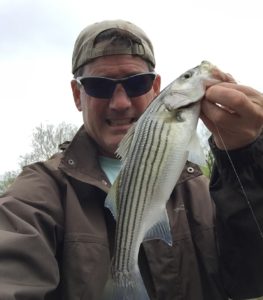…northern snakehead for 2017 took a Bushido Shad in November like it was summer. Making the effort made it happen.
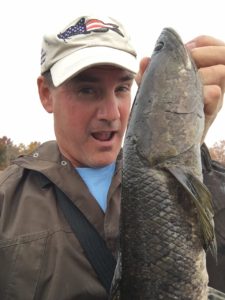
…northern snakehead for 2017 took a Bushido Shad in November like it was summer. Making the effort made it happen.

Crappies come in two varieties – black and white. You would think with descriptive names like that, telling the two species apart would be as easy as, well, black and white. For a crappie beginner, the differences may not be that obvious. For example; the very light colored fish at the top is not a white crappie. It is a black crappie.
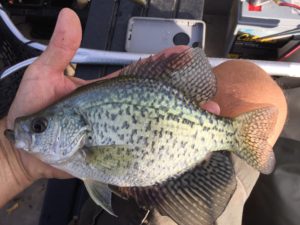

The most conspicuous difference is the patteren on the sides of the fish. The white crappie has dark blotches arranged in bars. The black crappie wears his blotches in an evenly distributed pattern.
Body shape is another ID cue. Black crappies have a more round silhouette. White crappies are more “stretched out”, and have a little more of a snout.


The most analytical identification characteristic is a count of the rigid spines of the dorsal fin, A white crappie will have 5 to 6 spines. A black crappie will have 7 to 8 spines. When in doubt, a quick count of the spines will provide a near certain identification.
The range and preferred habitats of the two species overlap quite a bit. In my area, the black crappie is the dominant species. In other areas, the white is the dominant crappie. In either instance, it is still quite common to run into both species during the course of a season, or even in a single day. With these three methods to differentiate the two species, you will always be sure of a proper ID.

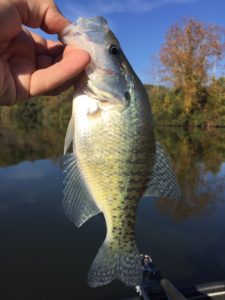
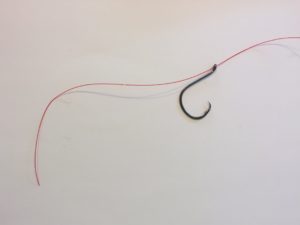
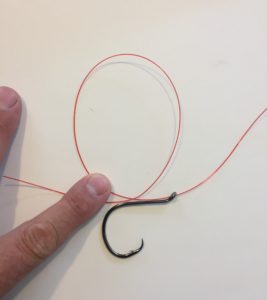
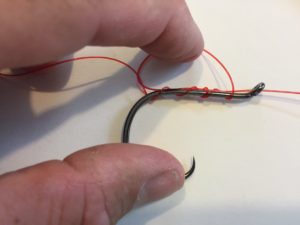
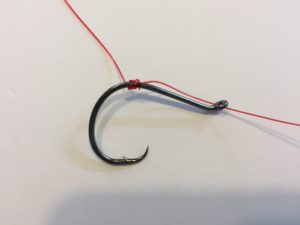

1
This great way to store and dispense line or leader from 1/4 pound spools. It’s a neater and cleaner solution than rubberbands or tape. It reduces tangles in your tackle bag while protecting the line from indadvertent UV exposure.

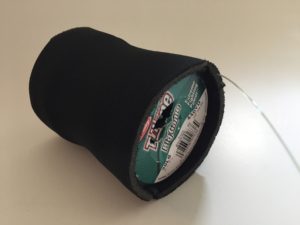

Sunfish generally don’t get enough credit. They were the “first fish” for many of us. Their colors rival any tropical species. Ounce for ounce, most of them put up quite a fight. Despite all that, they are often lumped together as one fish, or even overlooked altogether. Here’s an individual look at some of the major players and their characteristics.
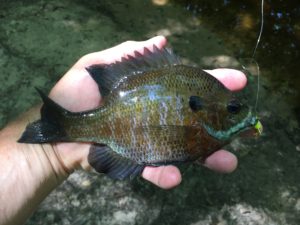
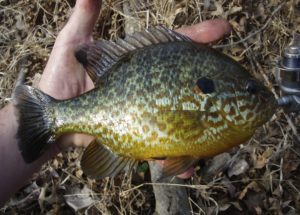

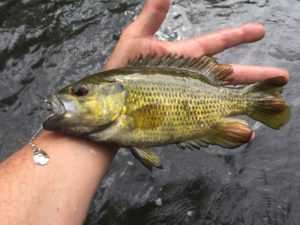
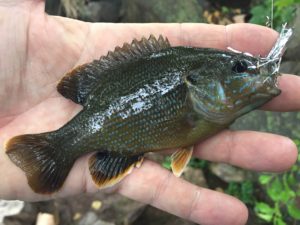
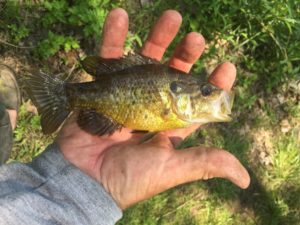
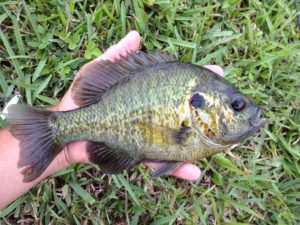
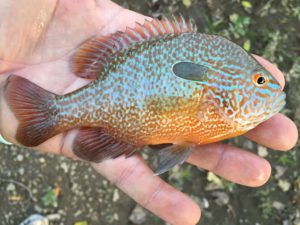
The Trilene Knot is a favorite of mine for attaching lures to fluorcarbon or standard monofilament lines and leaders. It is fast and easy to tie; and very strong when done properly.
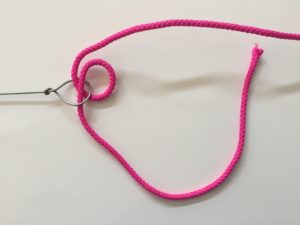
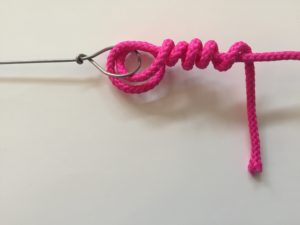
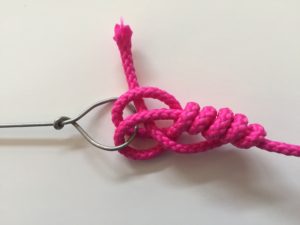
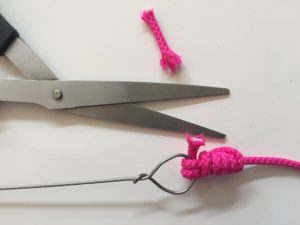
The rainy day, driveway worms described in Your Backyard Bait Shop a few weeks ago are a great resource, but what do you do if it’s not raining? As the name implies, nightcrawlers leave their burrows at night for the surface. They mate and who knows what the hell else they may do under the cover of darkness. Whatever they are up to, they leave themselves vulnerable to motivated fishermen.
By walking softly and scanning with a flashlight you can spot individual nightcrawlers at the surface. They are somewhat sensitive to a direct beam from a flashlight, and very sensitive to vibrations. If you are quick, quiet, and patient enough, you can collect a day’s worth of bait in a short time.


Above are a couple of outstretched nightcrawlers. They will stretch out several inches, but always keep their tail in the hole.
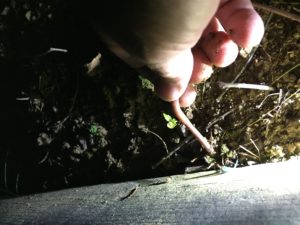
Make a quick grab where the crawler enters its hole. Keep a steady pressure and only pull when you feel the nightcrawler’s muscles relax. When you do pull – pull gently. Pull too hard and you will break him in half.
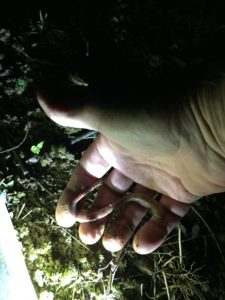
The prize in hand.

NSFW pic above: two nightcrawlers mating. Fun fact: night crawlers are hermaphrodites.
The Blue Catfish and the Channel Catfish are two very similar species with a great deal of overlap in range, habits, and physical characteristics. Anglers will often catch one while targetting the other. Identification can be tricky at times for the uninitiated.
Blue catfish attain a larger size than the channel catfish, sometimes exceeding 100 pounds. Under optimal conditions channel catfish will occassionally grow beyond 20 pounds, rarely surpass 30, and only a handful have ever topped 50 pounds. All fish start small, so size is only definitively helpful in identifying the largest blues. As the name implies, blue catfish are usually bluish gray on the dorsal side. Fish coloration is highly variable, so you can’t rely on that. Blues will typically have a more robust build with more weight in “upper torso” compared to the channel catfish. The body shape can be helpful for ID at a glance, but again, it’s not conclusive.
Look at the pic above of the two fish in the net. The fat, silvery blue one is a blue catfish. The slimmer, brown one is a channel catfish. Sometimes a proper ID is that easy; sometimes it’s not.
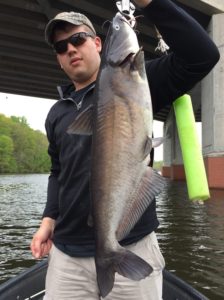
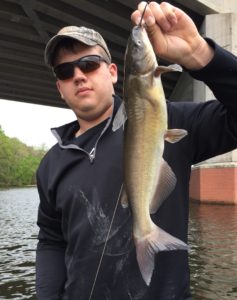
Above are examples of a blue and a channel of similar size, coloration, and body shape.

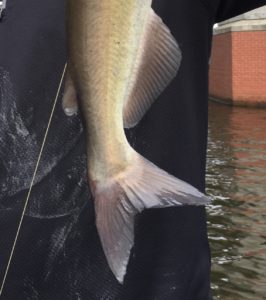
The key to the ID is in the anal fin. The blue cat (left) has a long straight anal fin, whereas, the channel cat (right) has a shorter more rounded anal fin. Although there is a difference in the number of rays in the fins, I pay more attention to the fin shape and overall length. The anal fin of a blue cat is long, straight, and somewhat angular. To me, it looks like a banner. The channel cat’s anal fin curves gradually to its full width. It’s shaped more like an elephant ear. I’m refering to an actual elephant’s ear; not the pastry.
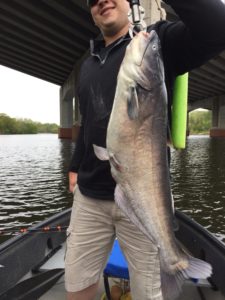
About 20 pounds, blue-gray coloration, big shoulders, and, most importantly, a banner-like anal fin – this is a blue catfish.
Spring showers bring us the bounty of “Driveway Worms”. It is a convenient opportunity to collect free, natural baits. Sizes will vary widely. Small worms can be used as bait for catching bait, or ultralight applications. Full-sized nightcrawlers can be used for a number of different gamefish from walleye to catfish.

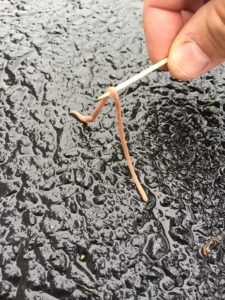

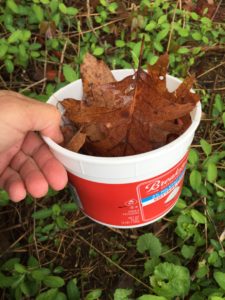
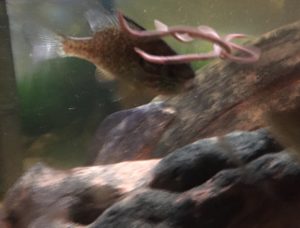
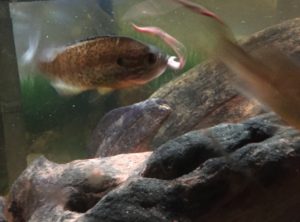
What could be more fun than catching a hard fighting, high jumping gamefish on light tackle? Well, catching them two at a time would, of course. While hickory shad are not the biggest fish out there, their vigor, cooperative spirit, and sheer numbers make them fan favorites. Hickories provide spring fun for anglers in coastal rivers up and down the eastern states, and tandem rigging makes it even better.
An anadromous species, the hickory shad spend the majority of their life in saltwater. They migrate into freshwater rivers only to spawn. Those that survive return to the salt shortly thereafter. We fishermen most often intercept them at or near their spawning grounds.

Tandem rigs are the name of the game for hickories. This my current tandem rig. Start with a Perfection Loop or other reliable loop knot at the end of your line or leader. Then about a foot or two above that tie in a Dropper Loop. Using two loop knots allows me to easily add, replace, or remove lures as the fishing conditions dictate.
One more note about rigging: if you are using a landing net, don’t make the separation between loops greater than your net’s hoop diameter. I figured this out the other day when we had about 30 inches between lures and only 18 inches of net. If we netted the top fish, the bottom fish had an extra foot of leader to evade the net. We had to lift the top fish out of the water, net the bottom fish, then lower the top fish into the net – not very elegant. A quick snip off the end of the leader and a new Perfection Loop corrected that.
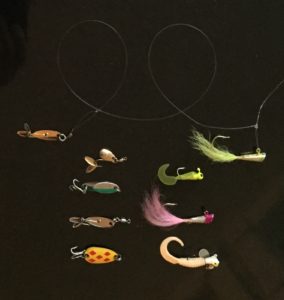
Shad darts, small curly tails, Kastmasters, and many other diminutive jigs and spoons are good choices for hickory shad. You can vary the lure style, color, or weight depending on the conditions. Wind, water clarity, current speed, depth, and personal preference all play a factor.
Spoons are best placed only in the bottom position. The wobble and spin of a spoon is restricted at the upper position and can also cause some tangles. Jig type lures perform well in either position. My usual lure offering is a shad dart at the top position and a small Shad King spoon at the bottom position.
The shad run begins in the south and continues roughly, sequentially northward. Now may be the time for tandem rigging shad on your home waters.
